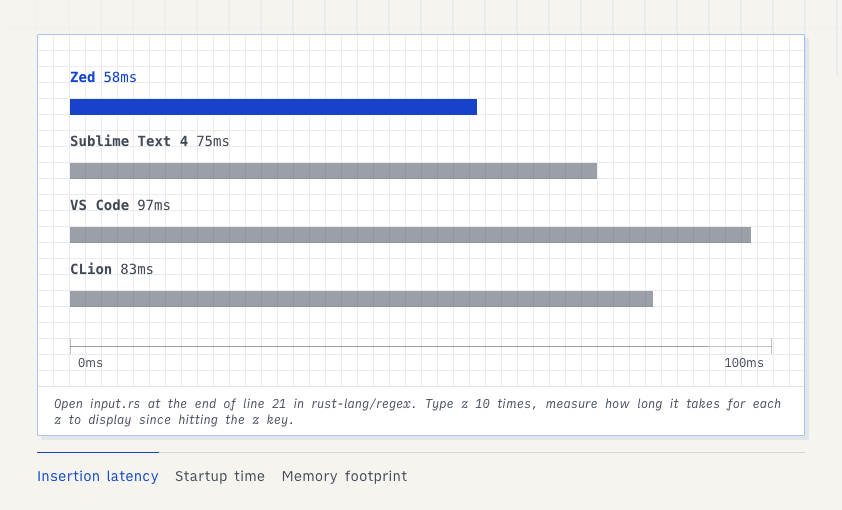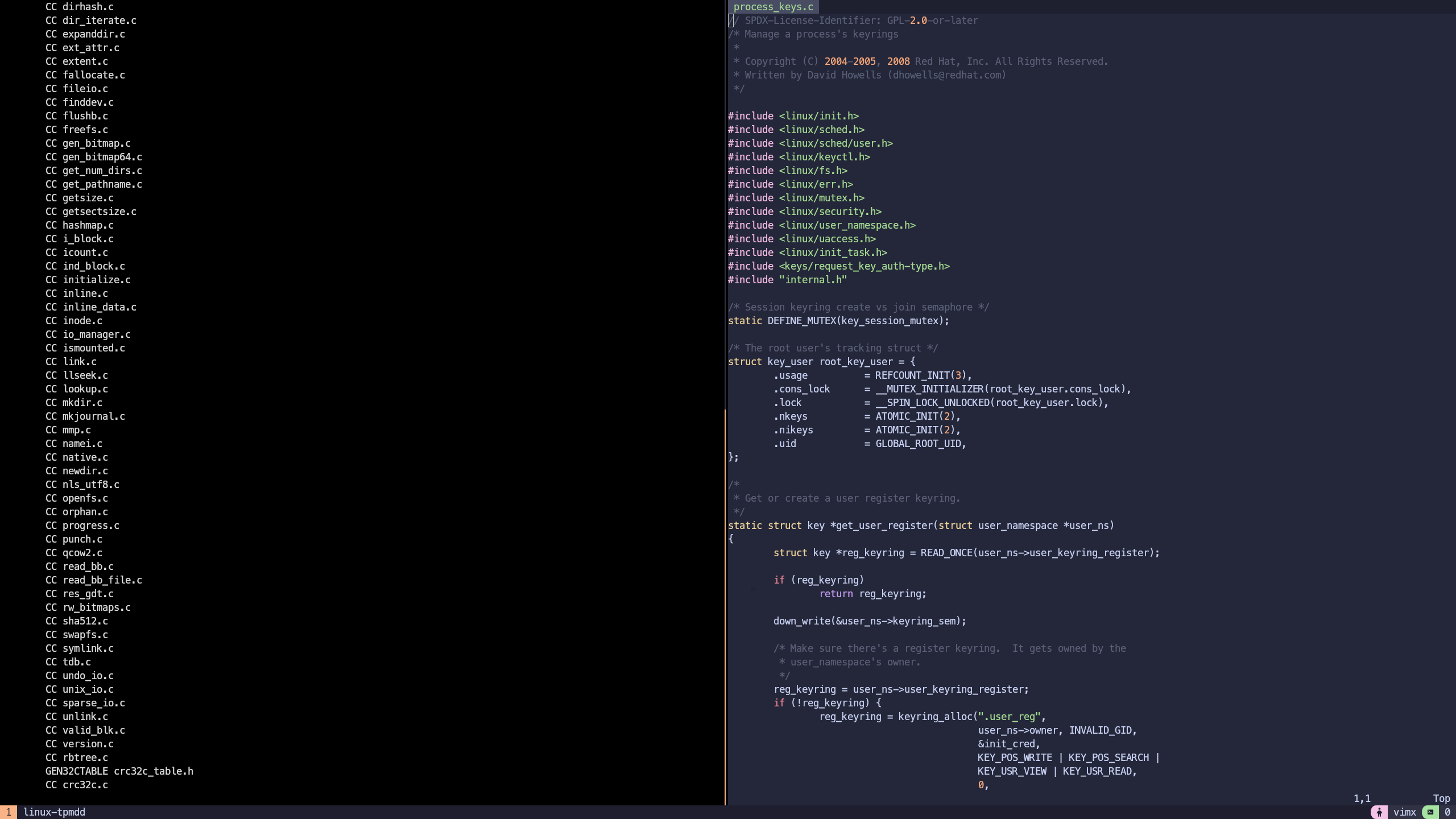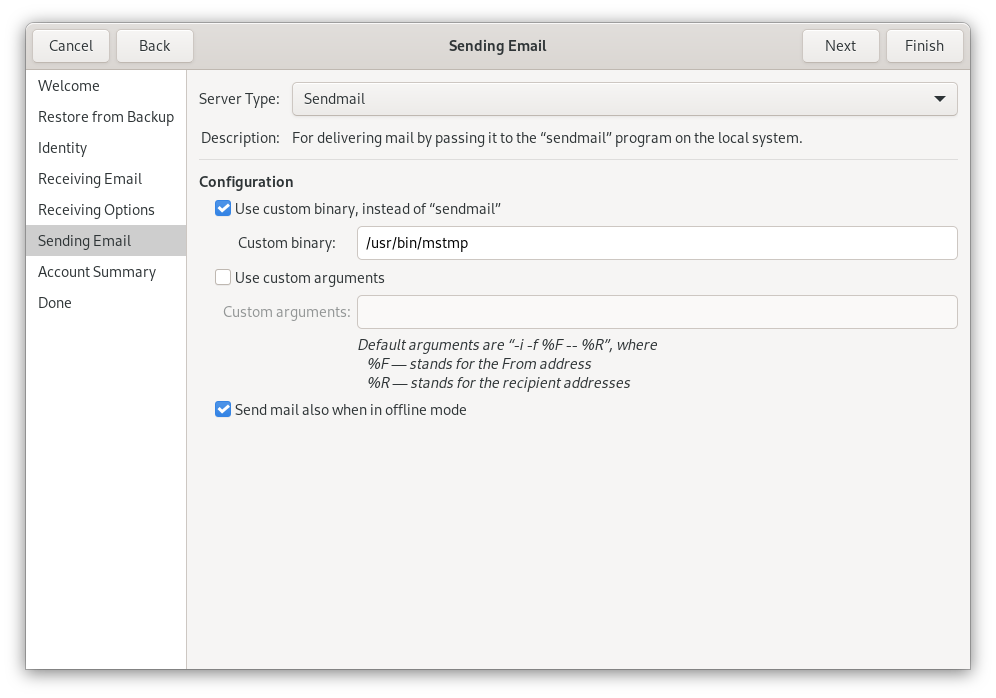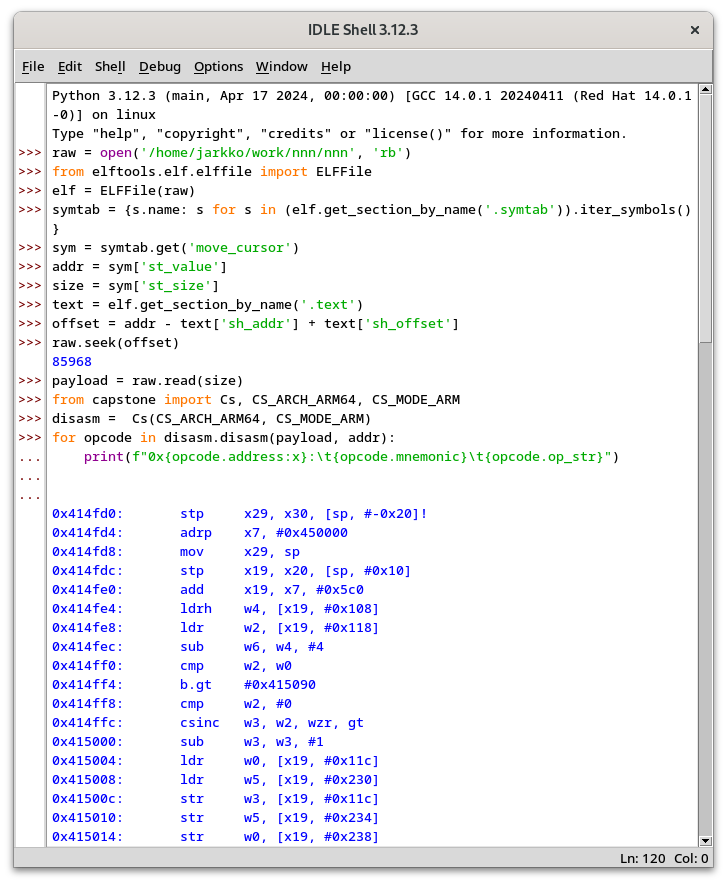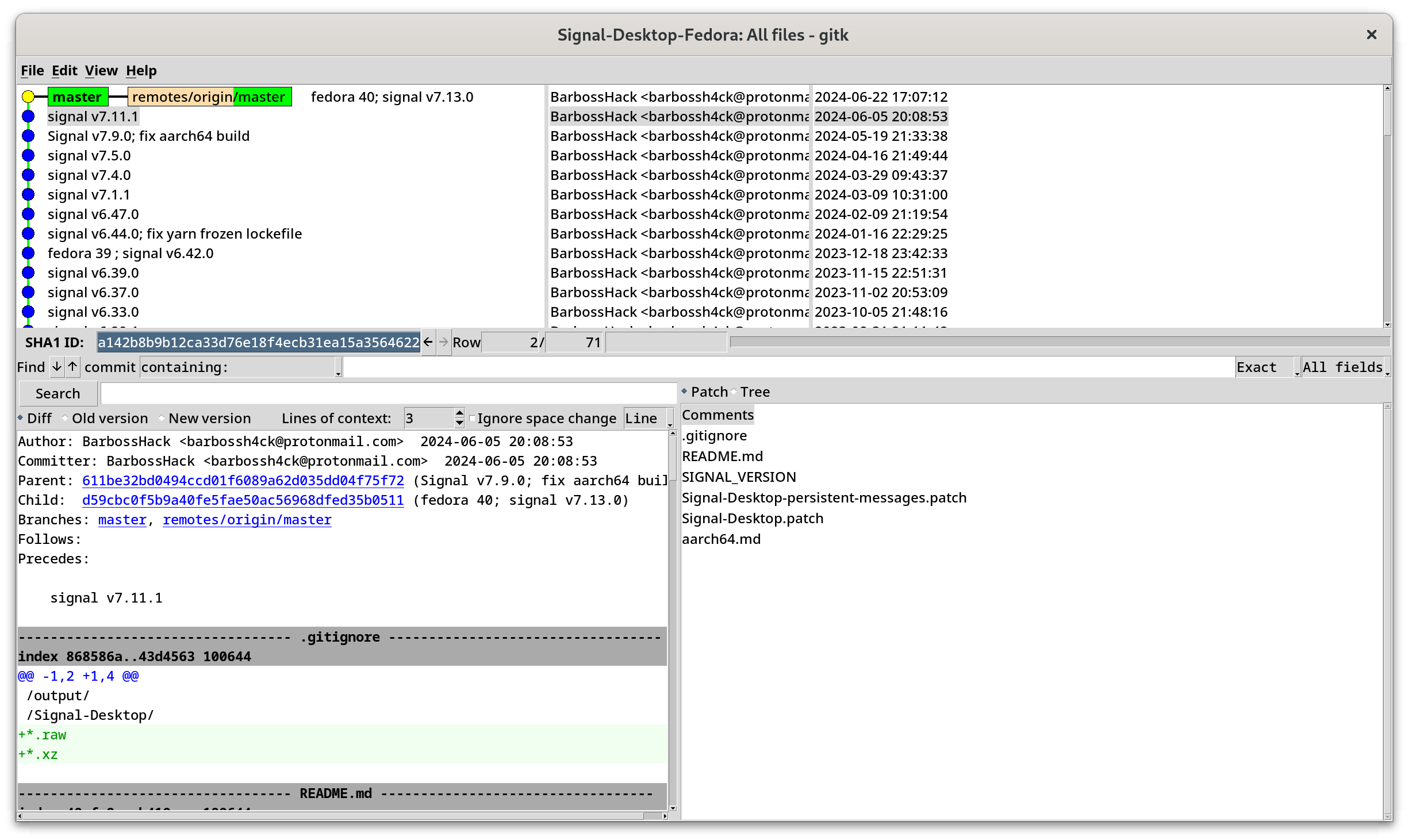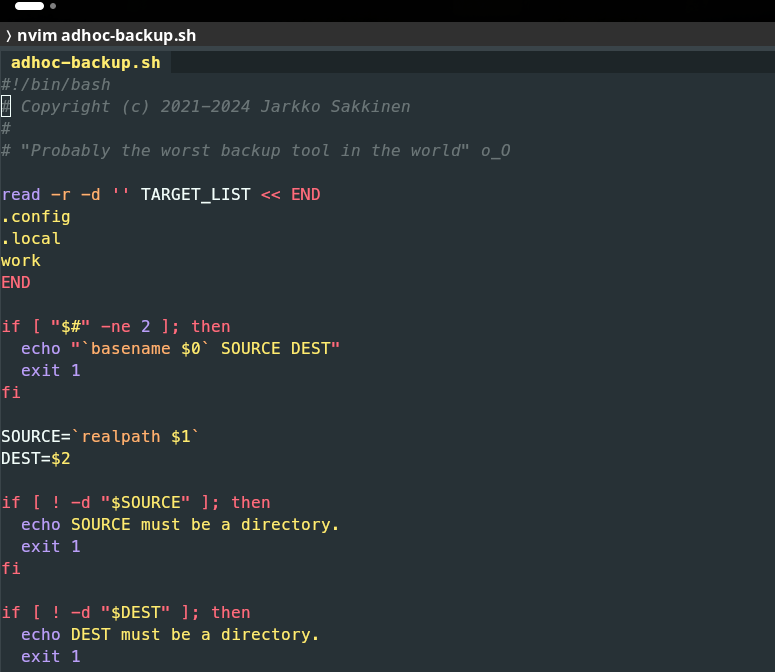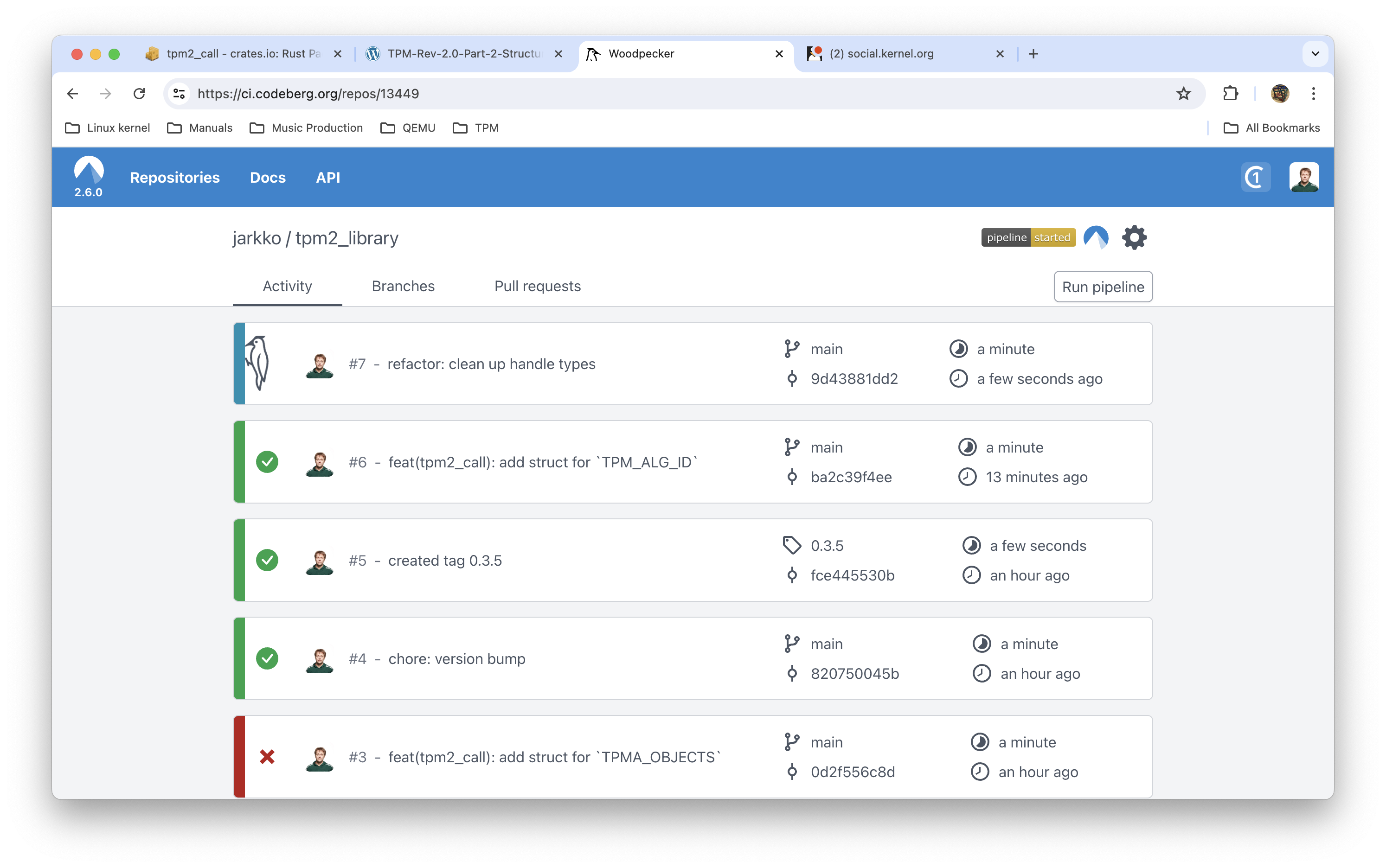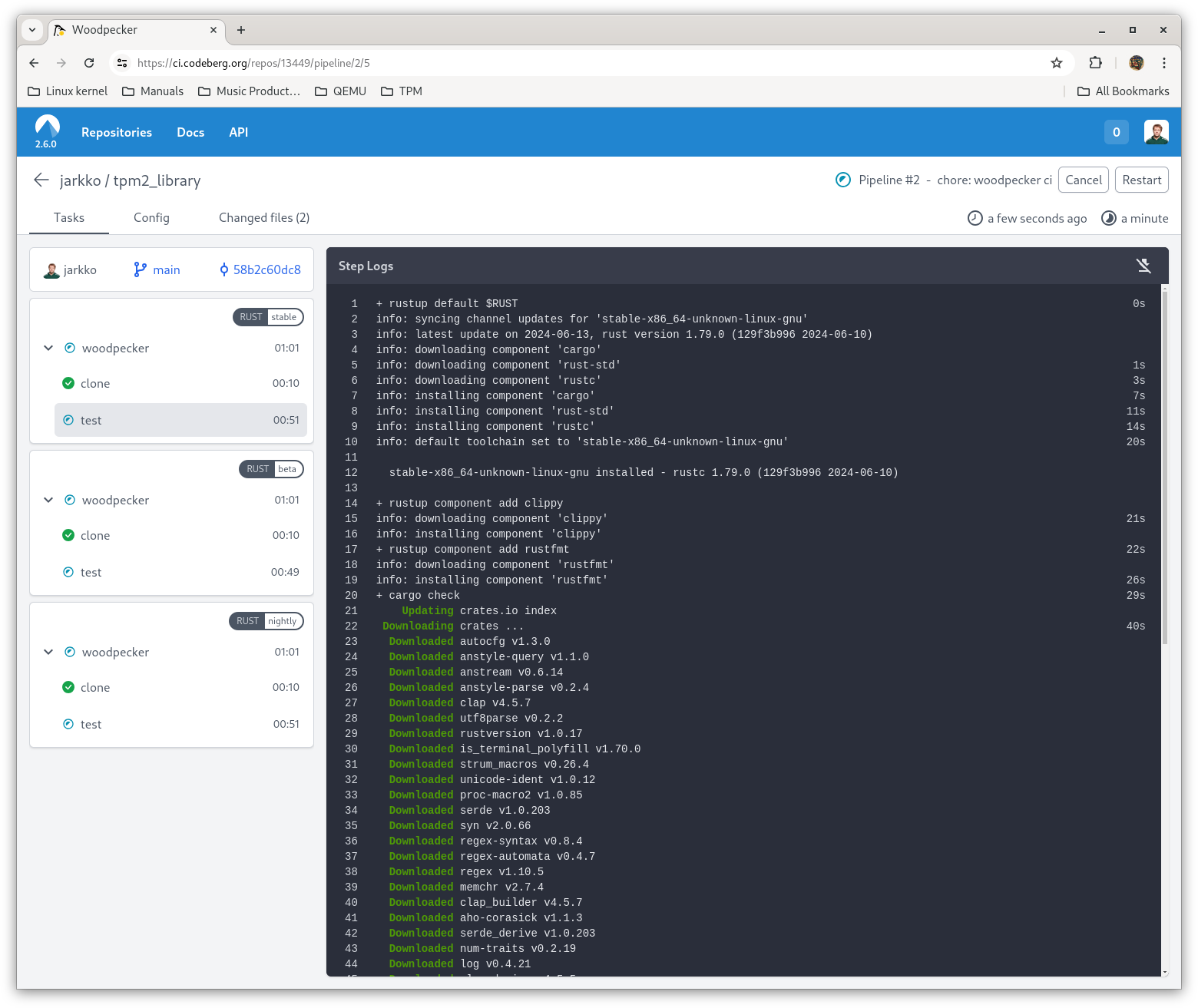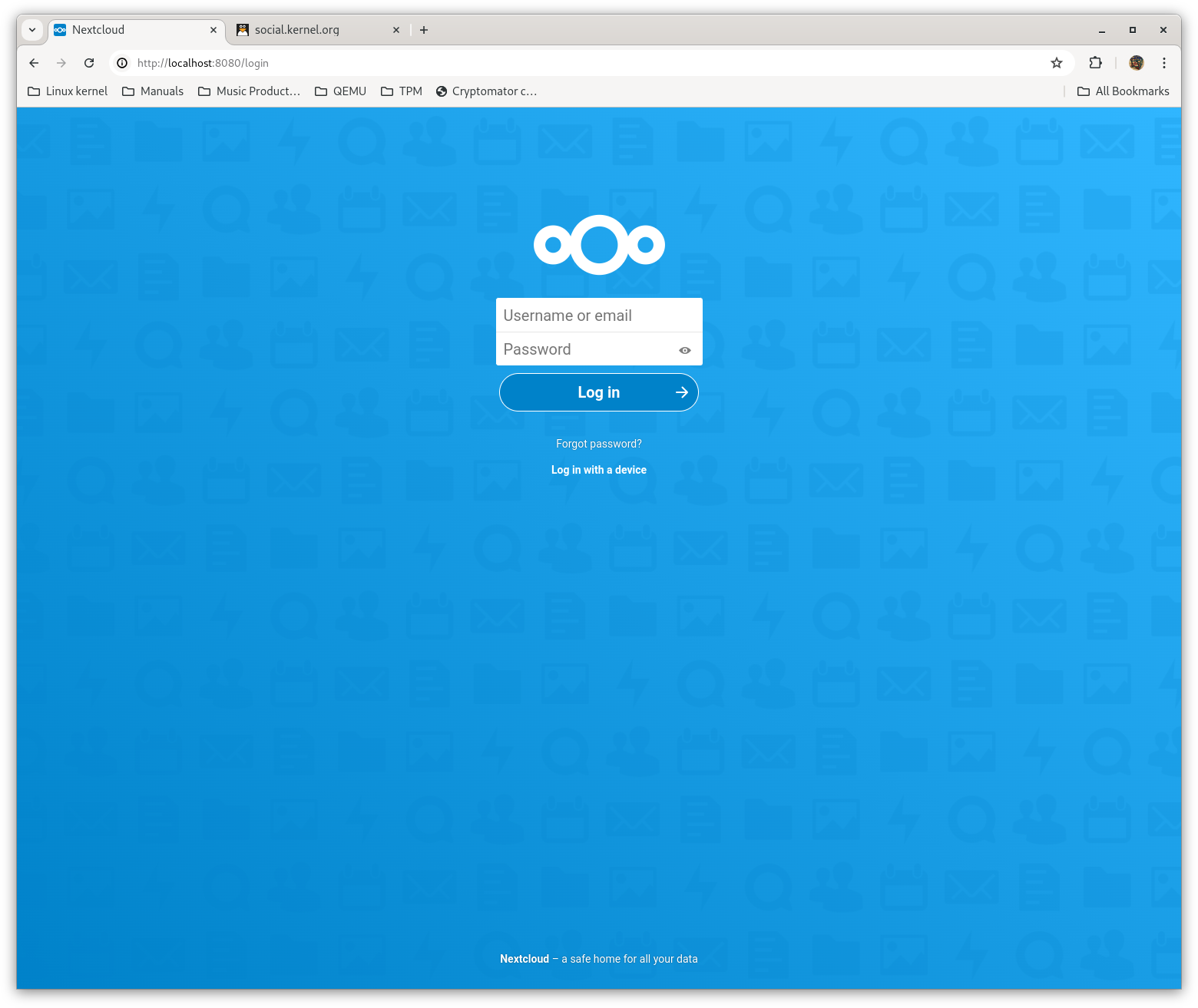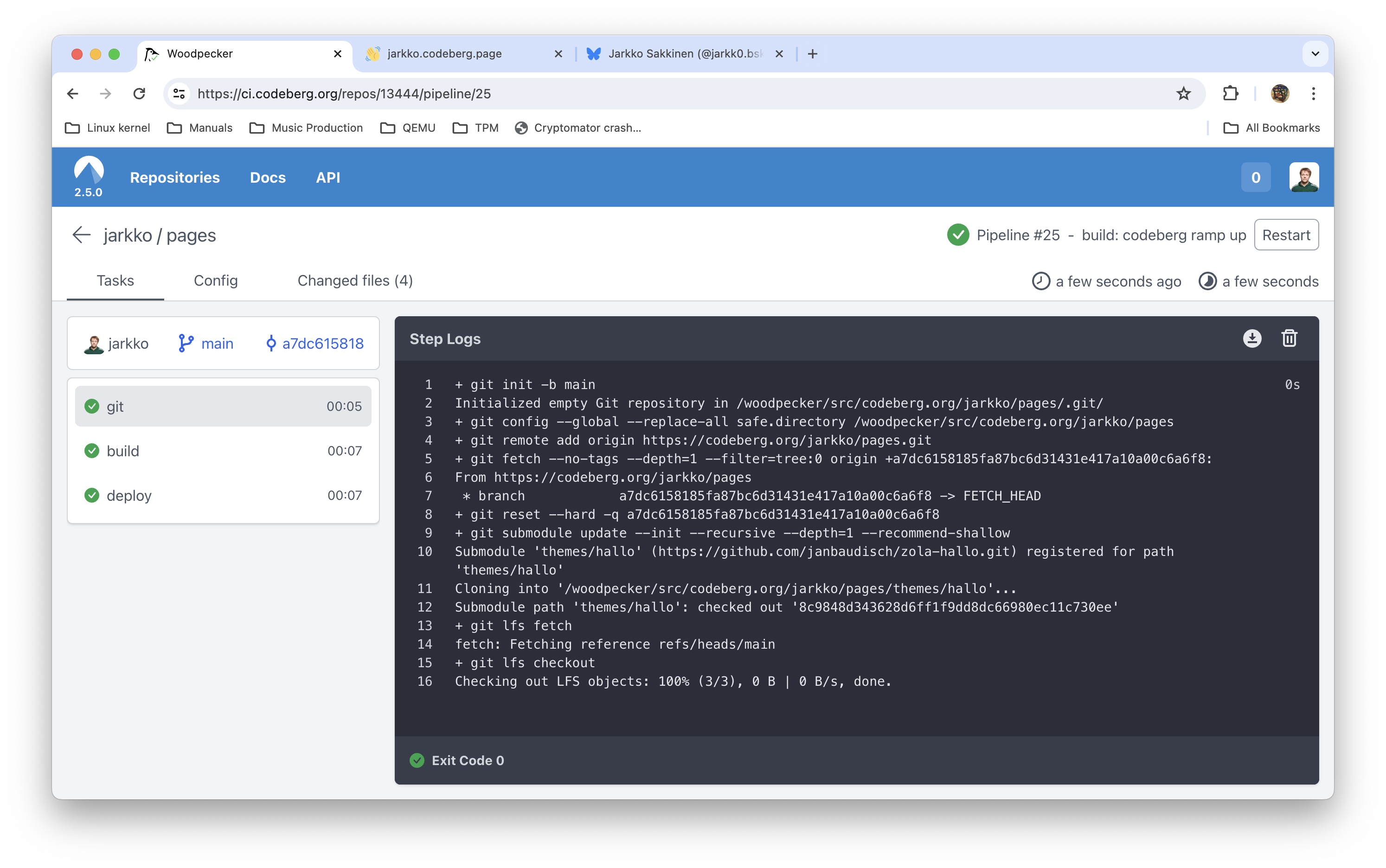Posts
5028Following
329Followers
502OpenPGP: 3AB05486C7752FE1
Jarkko Sakkinen
jarkkoZed editor is a great example of this. There's so many moving parts missing here that I could write a book just listing those one by one ;-) This is objectively marketing propaganda because absolute timing values without context and environment do not have any other meaning than giving preferred impression.
Examples of reasonable ways to analyze performance can be found from e.g. https://www.akkadia.org/drepper/cpumemory.pdf.
Jarkko Sakkinen
jarkkoThis is still IMHO a strong merit in #GNOME #Evolution, when having multiple identities.
In my case, I use a sub-address (RFC 5233) for bouncing kernel.org but it shares the account with my personal email address. Identities map to envelope addresses, and based on that msmtp will pick the correct SMTP server.
msmtp also allows to share SMTP configuration with #Git. E.g. for a freshly cloned repository, I might for instance:
git config from "Jarkko Sakkinen <jarkko@kernel.org>"
git config sendemail.envelopeSender "jarkko@kernel.org"
git config sendemail.sendmailCmd "/usr/bin/env msmtp"
Jarkko Sakkinen
jarkko#Rust #RustCrypto #rustlang
Jarkko Sakkinen
jarkkoIf #Radare2 vs #Rizin makes no sense to you, perhaps #Python will. It is pretty solid tool for driving #Capstone :-)
Transcript:
raw = open('/home/jarkko/work/nnn/nnn', 'rb')
from elftools.elf.elffile import ELFFile
elf = ELFFile(raw)
symtab = {s.name: s for s in (elf.get_section_by_name('.symtab')).iter_symbols()}
sym = symtab.get('move_cursor')
addr = sym['st_value']
size = sym['st_size']
text = elf.get_section_by_name('.text')
offset = addr - text['sh_addr'] + text['sh_offset']
raw.seek(offset)
payload = raw.read(size)
from capstone import Cs, CS_ARCH_ARM64, CS_MODE_ARM)
disasm = Cs(CS_ARCH_ARM64, CS_MODE_ARM)
for opcode in disasm.disasm(payload, addr):
print(f"0x{opcode.address:x}:\t{opcode.mnemonic}\t{opcode.op_str}")
Just got a bit familiar this. The main benefits are obviously:
- Recursive traversal #disassembly (vs linear sweep style in
objdump) - Re-usable analysis
- No boundaries how you can post-process the analysis (or visualize it)
I find this super fascinating!
Jarkko Sakkinen
jarkkoIt even has tool called icat for raw shell.
Jarkko Sakkinen
jarkkoJarkko Sakkinen
jarkkoneed this for my #btrfs to #ext4 migration 🤷 https://codeberg.org/jarkko/adhoc-backup #git
#codesberg - “Probably the best git hosting in the world”
Jarkko Sakkinen
jarkkoJarkko Sakkinen
jarkkoUsing #Storj and local #Nextcloud (one per machine) is actually quite easy:
!/usr/bin/env bash
# Taken from https://fedoramagazine.org/nextcloud-20-on-fedora-linux-with-podman/.
podman network create nextcloud-net
podman volume create nextcloud-app
podman volume create nextcloud-data
podman volume create nextcloud-db
# MariaDB
podman run --detach \
--env MYSQL_DATABASE=nextcloud \
--env MYSQL_USER=nextcloud \
--env MYSQL_PASSWORD=DB_USER_PASSWORD \
--env MYSQL_ROOT_PASSWORD=DB_ROOT_PASSWORD \
--volume nextcloud-db:/var/lib/mysql \
--network nextcloud-net \
--restart on-failure \
--name nextcloud-db \
docker.io/library/mariadb:10
# Nextcloud
podman run --detach \
--env MYSQL_HOST=nextcloud-db.dns.podman \
--env MYSQL_DATABASE=nextcloud \
--env MYSQL_USER=nextcloud \
--env MYSQL_PASSWORD=DB_USER_PASSWORD \
--env NEXTCLOUD_ADMIN_USER=NC_ADMIN \
--env NEXTCLOUD_ADMIN_PASSWORD=NC_PASSWORD \
--volume nextcloud-app:/var/www/html \
--volume nextcloud-data:/var/www/html/data \
--network nextcloud-net \
--restart on-failure \
--name nextcloud \
--publish 8080:80 \
docker.io/library/nextcloud:20
So no need to use Oracle cloud for this. And instances do not really need to necessarily to sync up given the user count.
